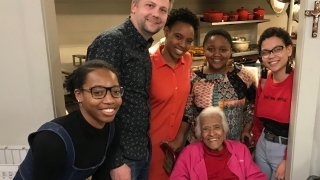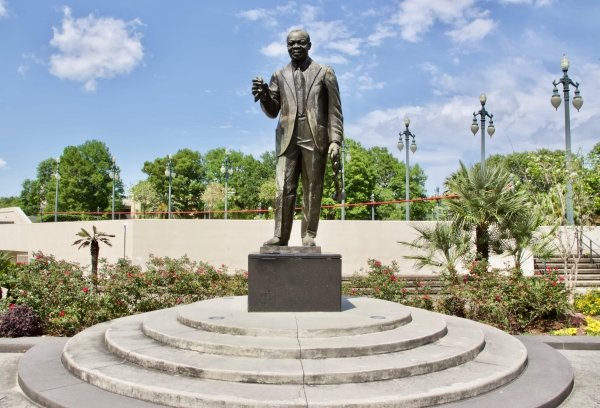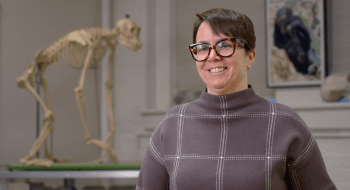
First Person: Discovering the Taste and Texture of Music
In the middle of Congo Square, Malik Bartholomew, our tour guide, said, “I would like you all to close your eyes in honor of the resilience and musicality of enslaved Africans on American soil.” Standing in the heart of Louis Armstrong Park, located in New Orleans, I felt that this was a sacred place.
As I took a moment to soak in the air, something new came alive inside of me. It was a new understanding that music is more than a sound: music is also an emotion, a collective consciousness of a people, perhaps a bowl of comforting food, and at times, the glossy touch of a saxophone. This off-campus study trip to New Orleans would show me sides to sound that I would have never imagined.
Before St. Lawrence University, I thought that music was just about the artist on the record, in the music video, on a concert stage, or, if they were lucky enough, at the Grammys. As a musical artist myself, I based my love for soul, hip-hop, and house music growing up on these simple understandings. Back home in Lesotho, I started recording and publishing songs for the radio at the age of 15. During interviews, I would address just the music itself, not the actual identity of the girl behind the creativity, the environment from which she comes, and the emotions informing her composition and performance. I was disconnected from my craft. This would all change with Professor Erik Johnson’s Rhetorical Traditions of the African World class in Spring 2019, which had a travel component to New Orleans, Louisiana.

In New Orleans, under the Code Noir of 1724, enslaved Africans were only allowed to connect with their suppressed African spirituality, of which much is founded on music, at Congo Square. This became the birthplace for much of the music treasured by America and the world today—most notably jazz music. Learning this, I felt a new wave of respect for the music of and/or inspired by Black Americans, overcome me. Black music was born out of pain and longing and this prompted in me a deeper appreciation of the musical history of many ethnic groups.
In New Orleans, I found that music has a taste and texture: it is spongy and sweet, much like beignets from Cafe du Monde. At times, it is crispy and you might have to queue under the blazing sun at the corner of Willie Mae’s, in the neighborhood of Treme, to eat it. On other days, it is warm and spicy, like a bowl of crawfish etouffee from Dooky Chase, where we met Leah Chase, the crowned queen of Creole cuisine. Her menu carries the spirit of New Orleans, my late grandmother’s home, with a hint of an African country I could not seem to locate on the map. I had the honor of not only eating Mrs. Chase’s food but talking to her and taking pictures, in her Dooky Chase kitchen, just three months before her passing.
In New Orleans, music has a color. It could be emerald green, deep purple, and gold, like the beads and feathers which adorn much of New Orleans’ trees, fences, buildings, and tourists during the Black Indian Mardi Gras season. Music also has several shades: it could have the rich browns of West Africa, the Caribbean, or the sparkle of France, North America, and Spain.
In New Orleans, music has emotion. Bourbon Street freed my soul with the sounds of 1920s jazz. Being in the French Quarter is like being in an exotic, romantic getaway movie, floating on a cloud, or on a reckless road trip with the girls. Music even inspired a few of us to venture from the hotel at midnight to experience the sounds of the Fat Catz Club in the French Quarter.
I have taken the lessons of New Orleans and the consciousness of Congo Square back with me, not just as an artist, but in my role as Concerts Chair for the Association for Campus Entertainment (ACE). I now know that music is not a solo affair; it is a valuable community affair. It is a place where students can gather for relief in the midst of campus challenges. Music is taste, texture, as well as sound, and even in Canton, New York, we can close our eyes and honor the resilience and musicality of those enslaved Africans at Congo Square.



